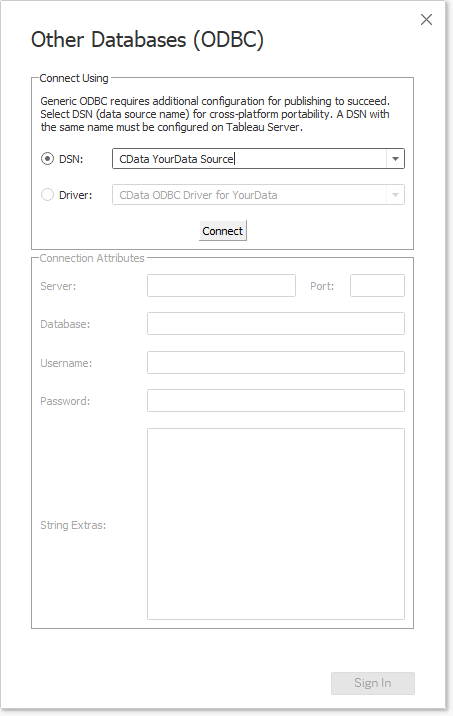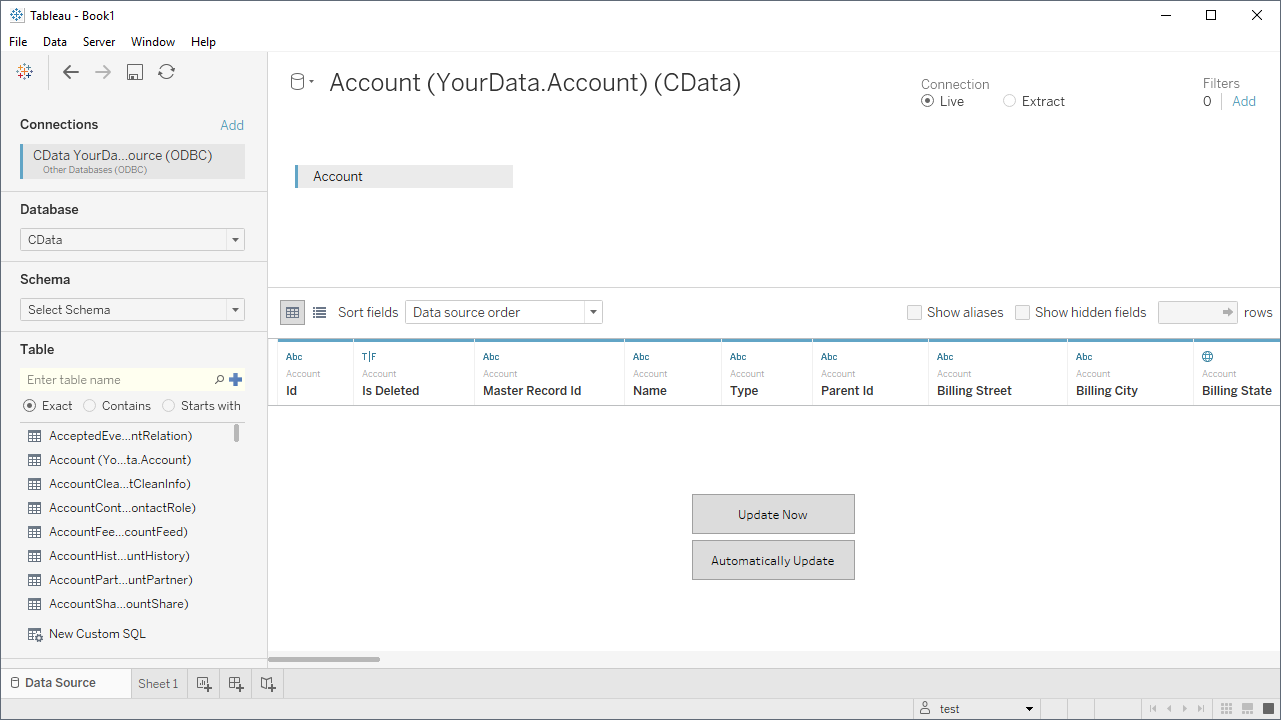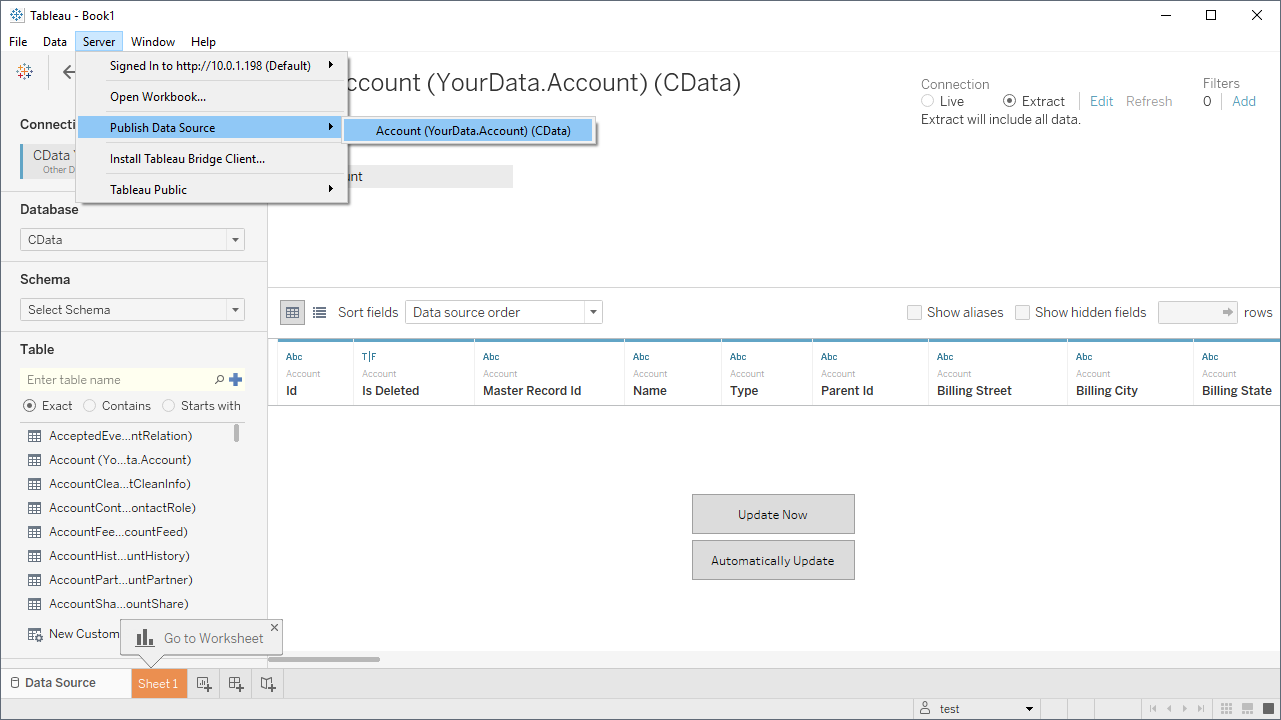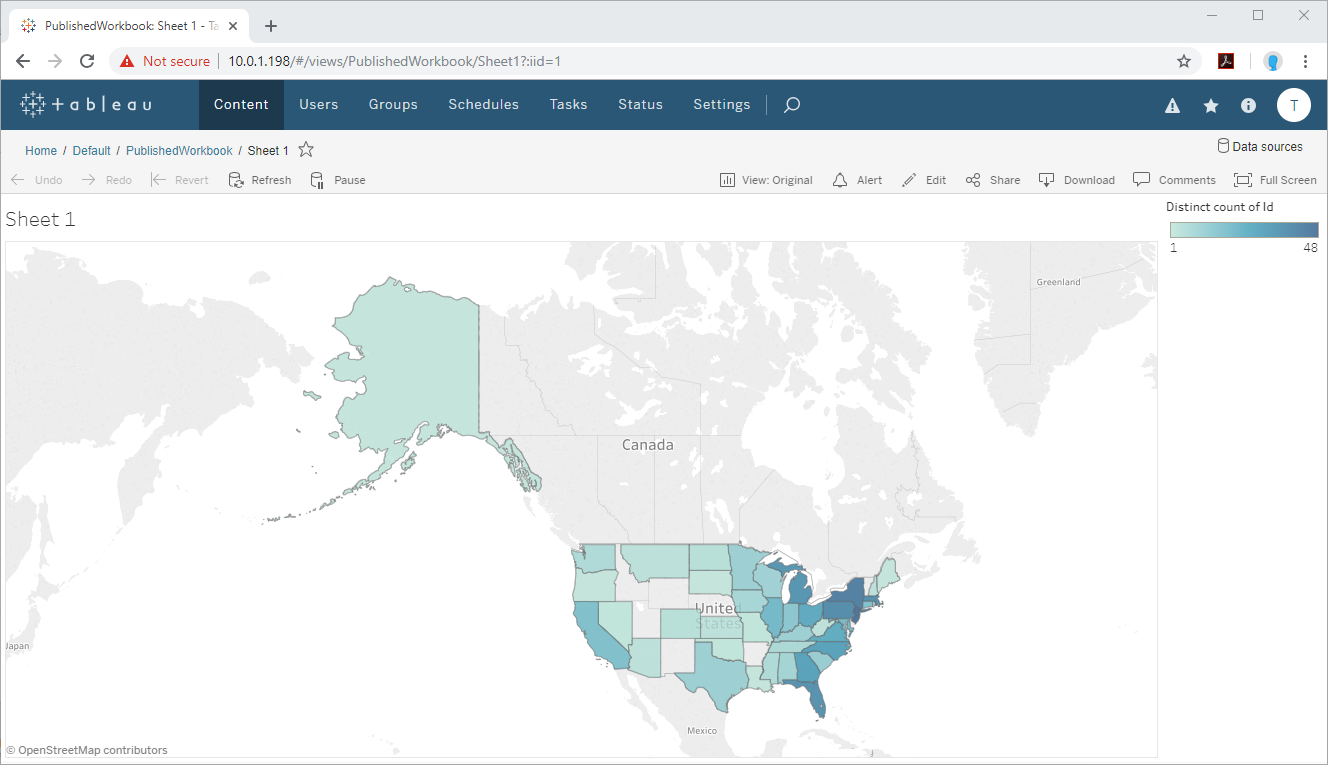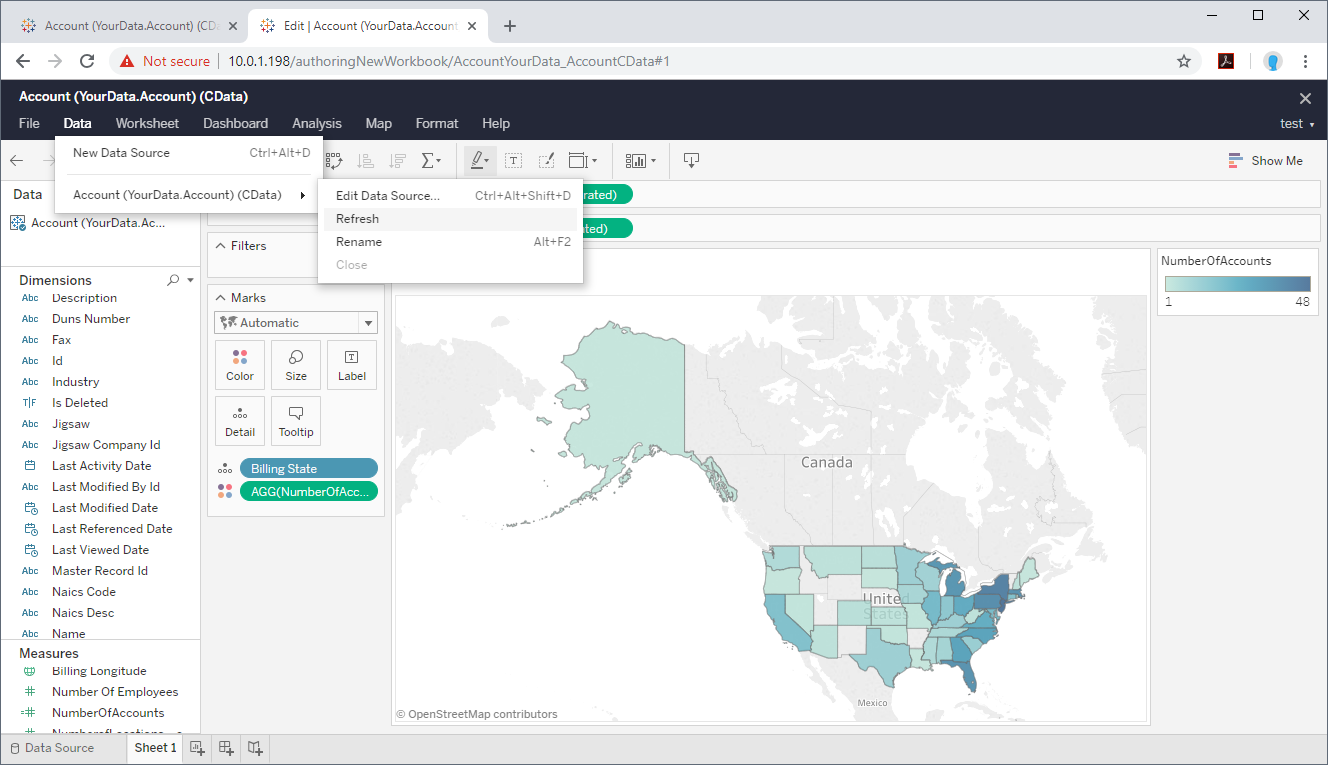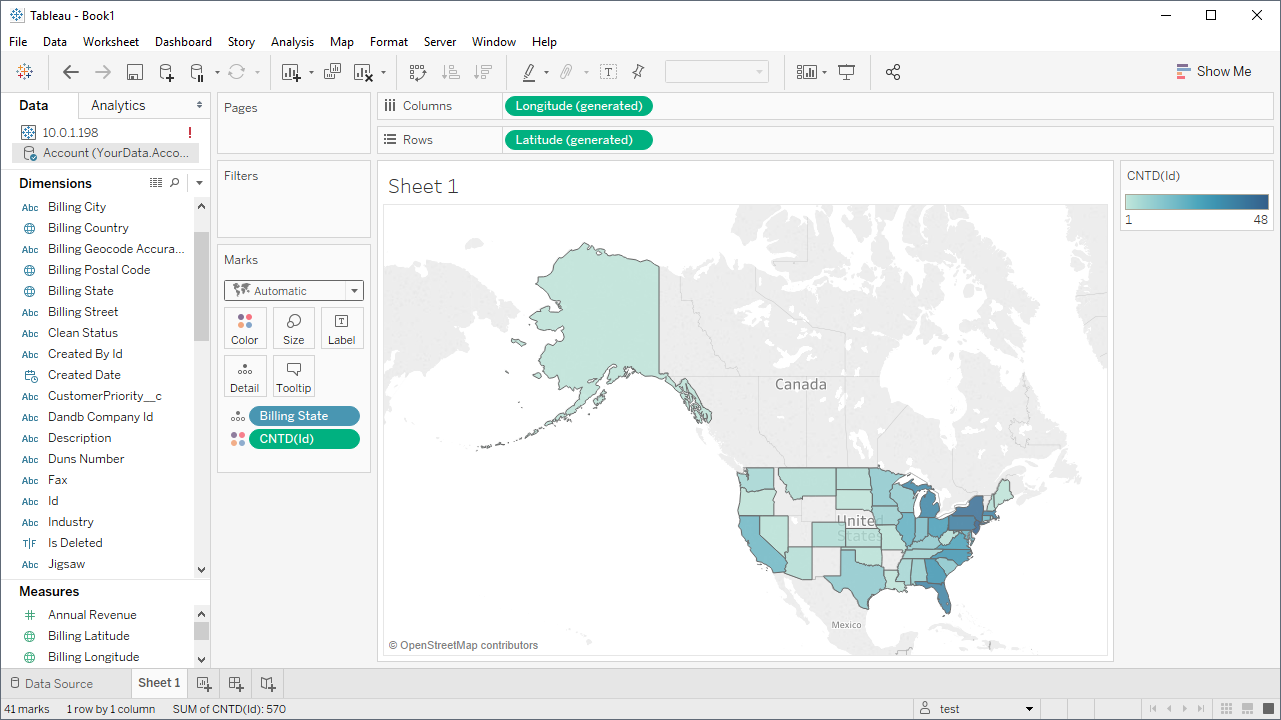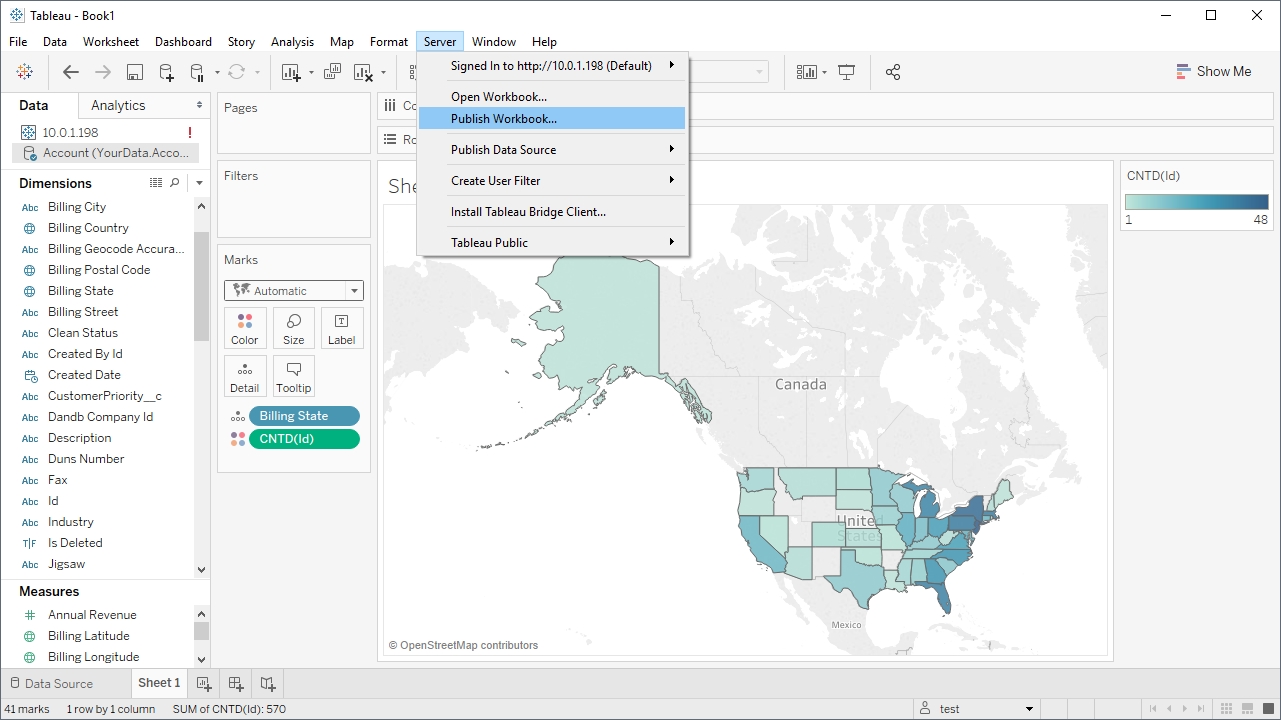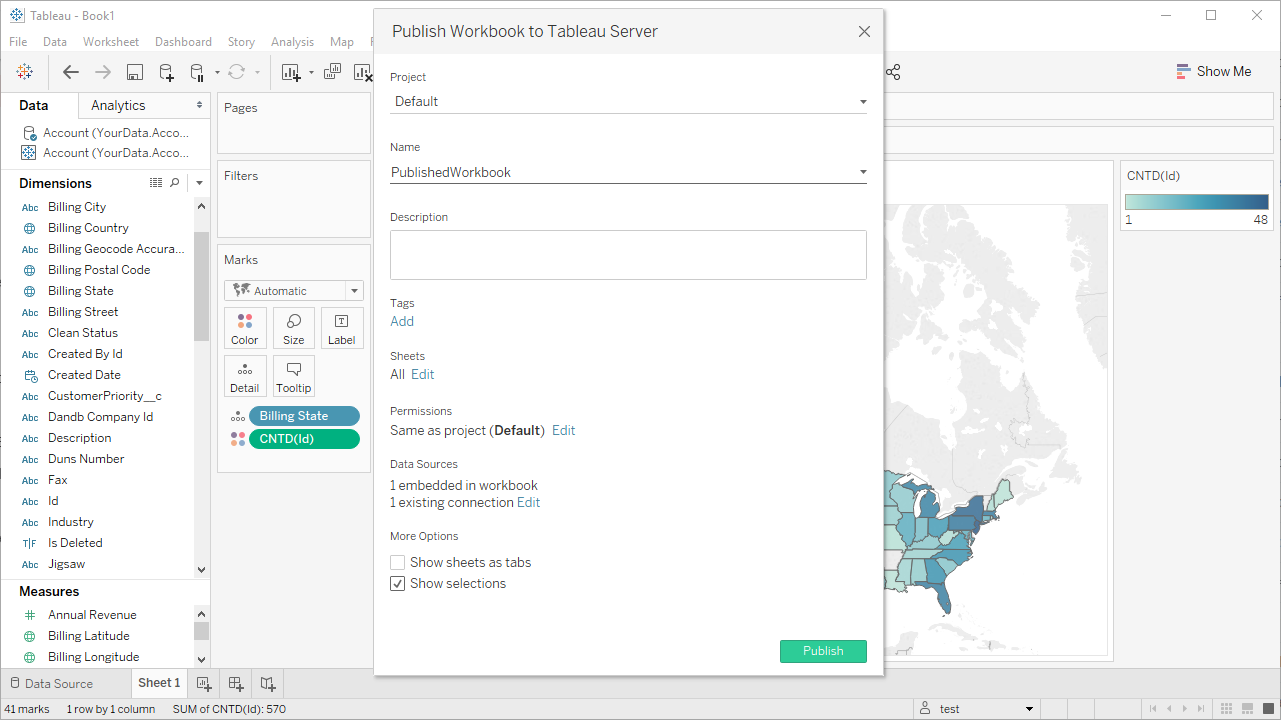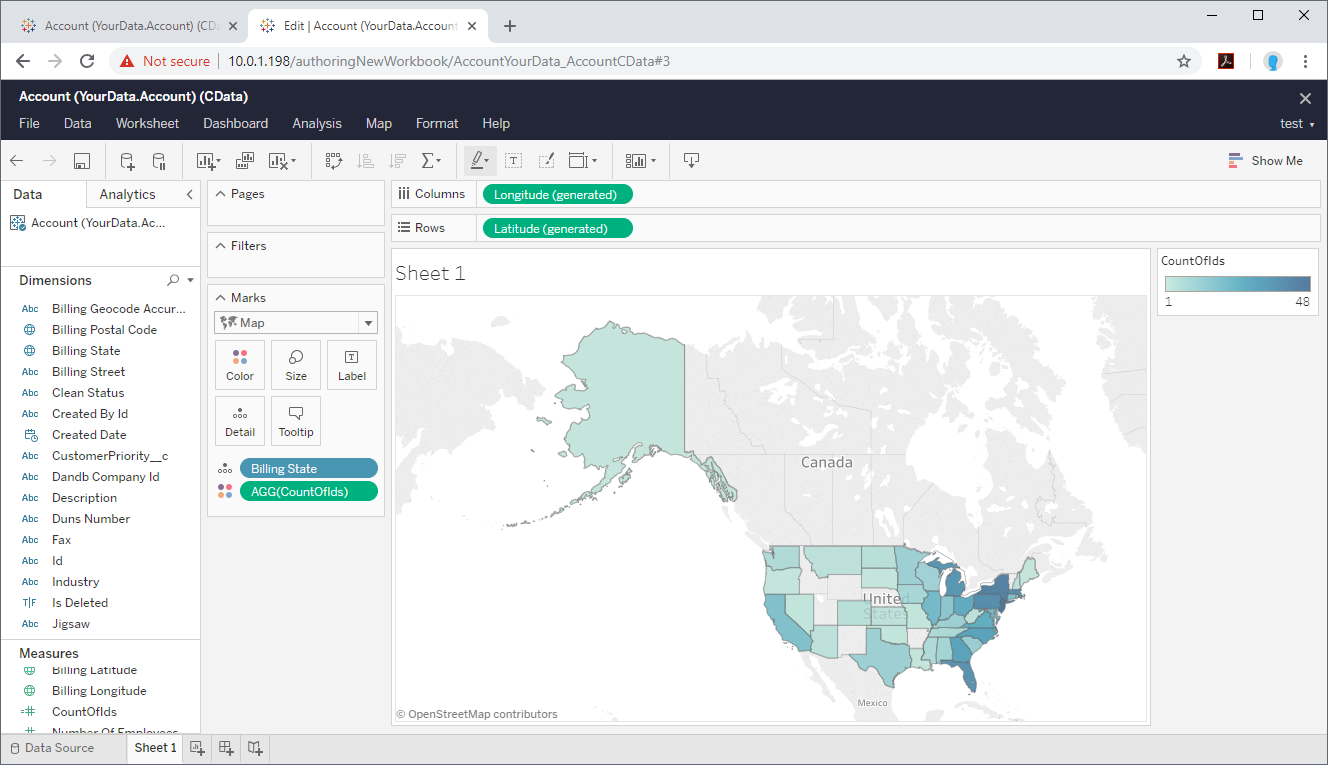How to publish and share WooCommerce Data dashboards with Tableau Server
Integrate connectivity to WooCommerce data into your enterprise reporting capabilities. The CData ODBC Driver for WooCommerce enables you to access live WooCommerce data in business intelligence tools like Tableau Server. Connectivity to WooCommerce APIs enables you to monitor changes to your data in real time. Other members of your organization can access your dashboards from a Web browser and get updates from their mobile phone.
This article walks through the process of configuring a DSN on the client and server machines, publishing a data source for WooCommerce to Tableau Server, and publishing an entire Workbook to Tableau Server (including the data source). If you publish a data source, you will be able to create new, refreshable workbooks in Tableau Server.
Connect to WooCommerce as an ODBC Data Source
To create a data source or workbook in Tableau Desktop and publish the data source or workbook to Tableau server, you will need to configure a DSN on each machine (Desktop and Server), specifying connection properties and creating DSNs using the same name on each machine. Information for connecting to WooCommerce follows, along with different instructions for configuring a DSN in Windows and Linux environments.
WooCommerce supports the following authentication methods: one-legged OAuth1.0 Authentication and standard OAuth2.0 Authentication.
Connecting using one-legged OAuth 1.0 Authentication
Specify the following properties (NOTE: the below credentials are generated from WooCommerce settings page and should not be confused with the credentials generated by using WordPress OAuth2.0 plugin):
- ConsumerKey
- ConsumerSecret
Connecting using WordPress OAuth 2.0 Authentication
After having configured the [ plugin, you may connect to WooCommerce by providing the following connection properties:
]
- OAuthClientId
- OAuthClientSecret
- CallbackURL
- InitiateOAuth - Set this to either GETANDREFRESH or REFRESH
In either case, you will need to set the Url property to the URL of the WooCommerce instance.
When you configure the DSN, you may also want to set the Max Rows connection property. This will limit the number of rows returned, which is especially helpful for improving performance when designing reports and visualizations.
Windows
If you are installing the CData ODBC Driver for WooCommerce on Windows, DSN configuration is the last step of the driver installation. If you already have the driver installed, or you wish to configure new DSNs, you can use the Microsoft ODBC Data Source Administrator.
Linux
If you are installing the CData ODBC Driver for WooCommerce in a Linux environment, the driver installation predefines a system DSN. You can modify the DSN by editing the system data sources file (/etc/odbc.ini) and defining the required connection properties.
/etc/odbc.ini
[CData WooCommerce Source]
Driver = CData ODBC Driver for WooCommerce
Description = My Description
Url = https://example.com/
ConsumerKey = ck_ec52c76185c088ecaa3145287c8acba55a6f59ad
ConsumerSecret = cs_9fde14bf57126156701a7563fc87575713c355e5
For specific information on using these configuration files, please refer to the help documentation (installed and found online).
Publish the WooCommerce Data Source to Tableau Server
With the connections to WooCommerce data configured, you are ready to publish a WooCommerce data source on Tableau, ready to be leveraged by users in your organization to create workbooks based on WooCommerce data.
Create and Publish a Data Source
In the Connect pane, click More -> Other Databases (ODBC). Select CData WooCommerce Sys, the system DSN.
The driver installation automatically creates matching user and system DSNs: The system DSN is needed to connect from Tableau Server.
![The connection to the DSN. (Salesforce is shown.)]()
- In the Database menu, select CData.
- In the Table box, enter a table name or click New Custom SQL to enter an SQL query.
- Drag the table onto the join area.
![A connection to a single table. (Salesforce is shown.)]()
- From the Server menu, click Publish Data Source -> (YOUR DATA SOURCE).
![]()
- Enter the URL to the server. For most instances, you will authenticate with the Tableau Server username and password. Other authentication scenarios can be found below:
- If Tableau is configured to use Kerberos and your computer has valid Active Directory credentials, Tableau connects to the server.
- If Tableau is configured to use SAML, a login prompt for your external identity provider is displayed.
- If Tableau is configured to use Active Directory, enter your Windows username and password.
- In the resulting dialog, set the Project, Data Source, and other properties. If you want to schedule refreshes, select Embedded Password in the Authentication menu. Click Publish.
You and other users in your organization can now create and share workbooks based on the published data source.
![Connectivity to your data source from the Web authoring environment in Tableau Server. (Salesforce is shown.)]()
Refresh Workbooks
With a system DSN configured on the client (Tableau Desktop) machine and server (Tableau Server) machine, you can refresh workbooks connected to the WooCommerce data source. From the Web interface for Tableau Sever, click Data -> (YOUR DATA SOURCE) -> Refresh.
![Refresh the data extract on demand from Tableau Desktop. (Salesforce is shown.)]()
Publish a Completed Workbook with WooCommerce Data to Tableau Server
If you have a specific Workbook that you wish to share with your organization, you can create the Workbook on Tableau Desktop and publish the Workbook directly to Tableau Server.
- To connect to WooCommerce and select data, follow steps 1-5 above.
![A connection to a single table. (Salesforce is shown.)]()
- Click Server -> Sign in and configure the connection to the server. For most instances, you will authenticate with the Tableau Server username and password. Other authentication scenarios can be found below:
- If Tableau is configured to use Kerberos and your computer has valid Active Directory credentials, Tableau connects to the server.
- If Tableau is configured to use SAML, a login prompt for your external identity provider is displayed.
- If Tableau is configured to use Active Directory, enter your Windows username and password.
- With the data selected, select dimensions and measures to visualize and select a type of chart or graph to build your visualization(s).
![]()
- Once the Workbook is complete, click Server -> Publish Workbook to publish the Workbook to Tableau Server.
![]()
- In the resulting dialog, set the Project, Name, Description and other properties. If you want to schedule refreshes, click Edit under Data Sources and change the Authentication option to Embedded Password. Click Publish.
![]()
You and other users in your organization can now review the published workbook from Tableau Server.
![Connectivity to your published Workbook from the Web authoring environment in Tableau Server. (Salesforce is shown.)]()






